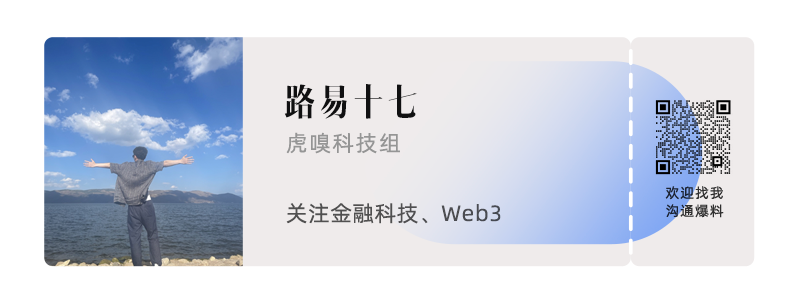70888
 Produced by Huxiu Technology Group Author|Zhou Zhou Header image|Visual China The gears of history are slowly turning, and an event that will lay the foundation for the future development of the blockchain industry is taking place. On September 15, 2022, Ethereum, which has been established for 8 years, will complete the merger (The Merge). 420,000 people participated in the verification, more than 7,000 active nodes around the world collaborated together, and tens of thousands of blockchain teams made choices... This system upgrade attracted the attention of almost all encryption and blockchain practitioners, and even attracted the attention of major mainstream financial regulatory agencies, semiconductor giants, and domestic and foreign Internet giants. There is no other reason. As the world's largest decentralized Internet platform, the most innovative blockchain and Web3 ecosystem, Ethereum claims that this is the most complex system upgrade since its establishment, which is of great significance. Vitalik Buterin, the founder of Ethereum, said: He has been preparing for this for 6 years. The merger of Ethereum means a complete upgrade of this ultra-large decentralized system with a market value of US$200 billion. According to Ouke Cloud Chain data, Ethereum currently has more than 3,000 developers and millions of users. Its ecosystem runs more than 400 Defi (decentralized finance) projects, 130,000 NFT contracts and more than 7,500 active nodes, and they will all witness and participate in this upgrade. In the past two years, two parallel networks have been running at the bottom of Ethereum. One is the PoW (Proof of Work) blockchain that was originally there, and the other is the PoS (Proof of Stake) blockchain that was only launched in the past two years. Behind both of them are corresponding interest groups. The purpose of the Ethereum merger is to completely replace the former with the latter without any downtime. Behind this upgrade, it will not only prove to everyone whether Ethereum has the ability to improve itself; Whether it is still the safest and healthiest decentralized Internet platform at present, people will also witness a capital reshuffle and interest redistribution worth hundreds of billions. As a member of the PoW side, Nvidia unfortunately suffered a big impact in this incident. According to a report from Guosheng Securities, in the fourth quarter of 2021, 45% of Nvidia’s revenue came from gaming and mining customers, amounting to US$3.4 billion. In the first quarter of 2022, Nvidia's old rival AMD (American Advanced Micro Devices) generated 54% of its revenue from computing and graphics products including mining graphics cards, amounting to US$4.8 billion. Guosheng analyzed that although Nvidia and AMD have not split their mining business, which makes it impossible to know the specific income of the mining business of these two semiconductor companies, they can still get a glimpse. The merger of Ethereum will have a significant impact on the revenue of these two companies. Not long ago, Nvidia CEO Jensen Huang said: “Our GPU supports the world’s largest distributed supercomputing, which is why it is so popular in the cryptocurrency field. ”Now, as a believer in cryptocurrency, Huang Renxun has been abandoned by the encryption giants. Nvidia is just a shadow of this incident. The merger of Ethereum directly affects the interests of hundreds of thousands of cryptocurrency miners ; A mining market with a scale of 100 billion has been developed in ten years. The CEO of a crypto mining company said: “The merger of Ethereum will force PoW miners to find other small PoW blockchains, resulting in overcrowding of these blockchains, increasing mining difficulty, and declining profitability. ” So, why does Ethereum go to such trouble to merge and offend the entire mining industry? “In 2014, Ethereum stated in the white paper that it would switch from PoW to PoS. Everyone initially thought that it would be realized in 2018 or 2019. However, the research on PoS was not yet complete at that time, and they did not expect that it has been delayed again and again, until now. ”One practitioner said. Choosing PoS or PoW is not only a battle of interests, but also a battle of beliefs. PoW (Proof of Work) was once the basis for the operation of Bitcoin, Ethereum and all blockchains (public chains). The reason why Ethereum used to be able to operate normally was that each miner or mining pool acted as a node and provided computing power for the entire system through mining. However, Ethereum founder Vitalik Buterin believes that mining this model requires too much energy and requires the issuance of hundreds of thousands of Bitcoins or Ethereums every year. He thinks this is not a good mechanism. On the contrary, the PoS mechanism can save 99.95% of power consumption and make it more difficult for the main network to be attacked by 51% of the computing power. In addition, another key benefit of PoS is that it unites a wider group and deeply binds hundreds of thousands or even millions of people to participate in blockchain verification. Users no longer need to purchase hardware such as graphics cards and mining machines as before. They only need to pledge ETH at the software layer to participate in Ethereum mining. “You only need an internet-connected laptop to participate in mining, which will greatly increase the number of stakers or miners, thereby achieving greater decentralization. ”said one crypto industry analyst. According to data from Ouke Cloud Chain, the total number of ETH 2.0 pledge addresses has exceeded 430,000, and the number of verifiers has also exceeded 420,000, almost double the number in the same period last year. It is foreseeable that after the Ethereum merger, the number of people and addresses staking Ethereum will increase significantly again. In the past, miners were a group of profit-seeking people who had little to do with the Ethereum ecosystem. However, after PoW is converted to PoS, currency holders (pledgers) become miners, and more participants will be tightly tied to Ethereum. From PoW to PoS, the Ethereum ecosystem actually started a competition for the accounting rights of distributed ledgers. It chose to eliminate the previous accounting method (PoW) and interest groups (institutions and individuals who use mining machines to mine), and embrace the new accounting method (PoS) and interest groups (people who hold coins and pledge Ethereum coins). For nodes, PoW is more like rolling dice, while PoS is more like buying lottery tickets. In PoS, block transactions are verified by validators who have staked multiple tokens. The more tokens an individual has associated with the blockchain, the higher the likelihood that they will be randomly selected as a validator for the network. Compared with PoW, PoS also prefers ordinary people. As long as people are connected to the Internet, they can have nodes without buying expensive mining machines. This mechanism has received wider recognition and consensus among people. “In addition to BTC, other Crypto ecosystems will turn to POS. ”One practitioner judged. A trend is becoming more and more obvious. More and more mainstream blockchains have chosen PoS, such as Solana, Polygon, etc. However, there are also many miners who believe that PoS is not necessarily a good choice. As the party whose interests have been harmed, miners believe that the merger of Ethereum actually violates the spirit of the blockchain. “Mining machines open the bridge between the physical world and the virtual world. For such a grand facility to embrace supervision and censorship will bring many problems to decentralization, which goes against people's original vision of complete decentralization. ”said one practitioner working at a crypto miner. For a long time, the encryption industry was a group that was not subject to government supervision. They believed in decentralization and therefore had a strong aversion to government supervision. Moreover, Shenyu, a supporter of PoW, believes that the current PoW blockchain can achieve the anonymity of block-producing nodes, but PoS has certain difficulties due to the mortgage of assets on the chain. Some industry insiders believe that PoS has more uncertainties than before in terms of government supervision and resistance to censorship. This has also become a common concern among practitioners: If the SEC treats Ethereum as a security, how will it face regulatory scrutiny? This is not far away. Recently, the chairman of the US SEC has stated that both cryptocurrency issuers and exchanges are obliged to register with the SEC. The PoW side believes that Ethereum should not be put into a situation where it may be subject to government supervision, and Ethereum may violate blockchain fundamentalism. The conflict between these two views cannot be reconciled and has become a confrontation between two ideologies. Nvidia, Bitmain, Sun Yuchen, etc. all stand on the side of PoW; Vitalik Buterin, the Ethereum Foundation, USDC and USDT and the Defi market they lead, Yuga Labs and Opensea and the NFT market they lead stand on the side of PoS (Proof of Stake). Proponents of the merger argue that miners have completed their historical role and should be phased out because they consume too much energy. Judging from the current situation, most of those who support the merger of Ethereum are those pursuing technology and product innovation. They believe that the future world should be built with newer mechanisms and more new participants. It is worth mentioning that the Ethereum merger event has also attracted the attention of many parties in China, including blockchain startups, financial institutions, Internet companies, etc. For example, in order to attract more Ethereum miners, Conflux plans to replace its PoW algorithm with Ethash. Although cryptocurrency is clearly prohibited in China, it attaches great importance to Ethereum application technologies that do not involve tokens, such as smart contracts. Smart contracts are self-executing agreements that can greatly improve the efficiency of financial institutions in certain areas. On Ethereum, developers use “smart contracts” to build a large network of financial institutions, such as exchanges and lenders. A paper by the IMF (International Monetary Fund) pointed out that the marginal cost of financial activities through Defi applications is one-third that of banks in developed countries and one-fifth of banks in developing countries. Domestic regulatory agencies, financial institutions, and Internet companies are also trying to apply this technology. Ethereum, to a certain extent, is already a successful social experiment and is becoming an object for domestic entrepreneurs to imitate, learn from, and transform to suit the domestic soil. The largest decentralized Internet platform in the world today has successfully led and dominated the wave of Defi and NFT, and spread the concept of Web3 around the world. It is the source of 700 domestic NFT platforms. In the future, it will also perform five major upgrades (merger, take-off, border, clear, carnival). It has broken into and is integrating into mainstream financial markets and Internet platforms. The merger, the first comprehensive upgrade of the Ethereum system, will be a key step in introducing the "decentralization concept" into the mainstream world.  If you have any objections or complaints about this manuscript, please contact tougao@huxiu.com End If you want to increase your knowledge, follow the Huxiu video account! |